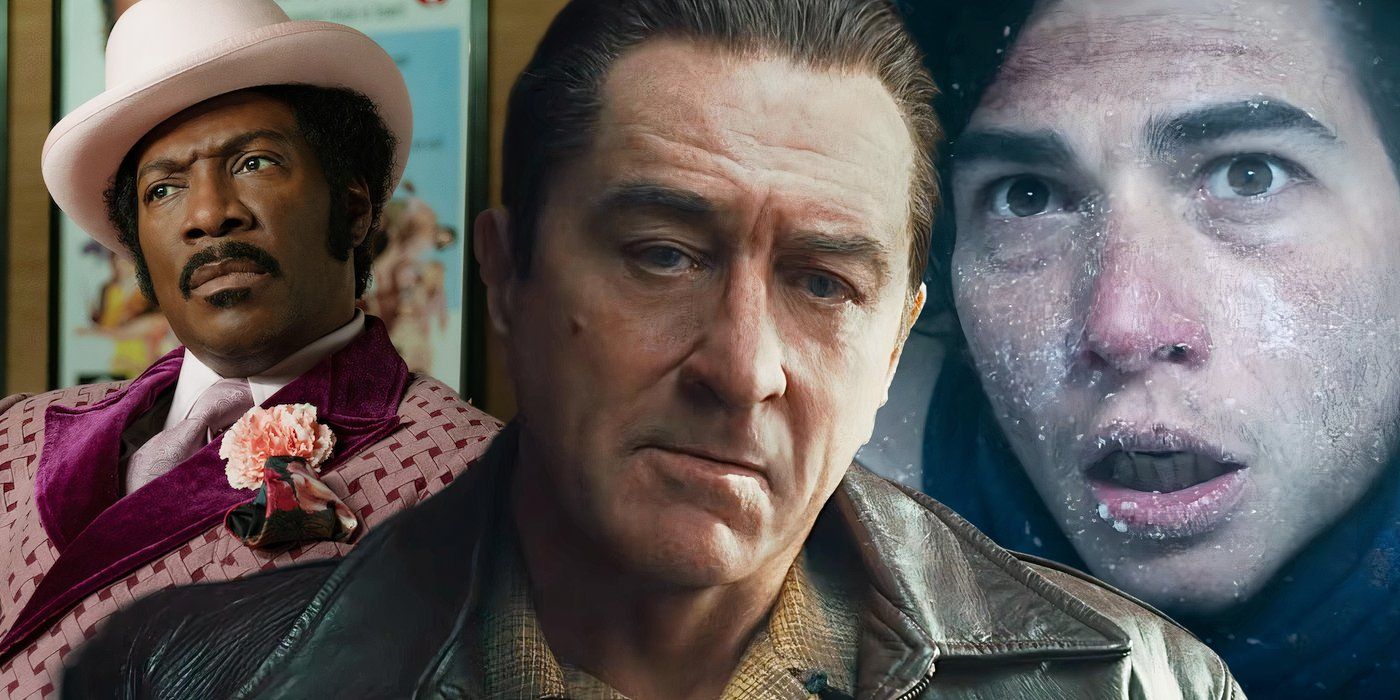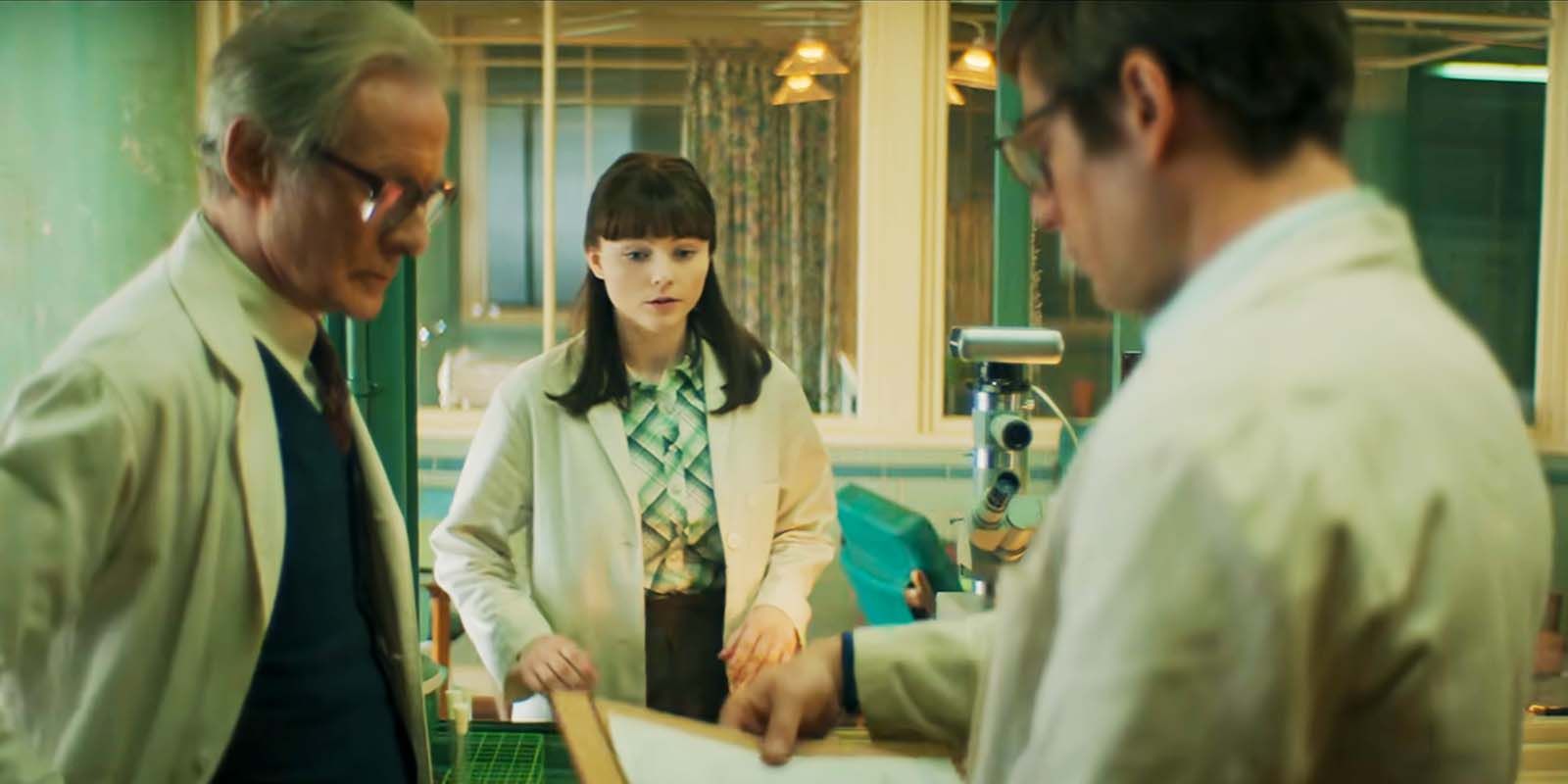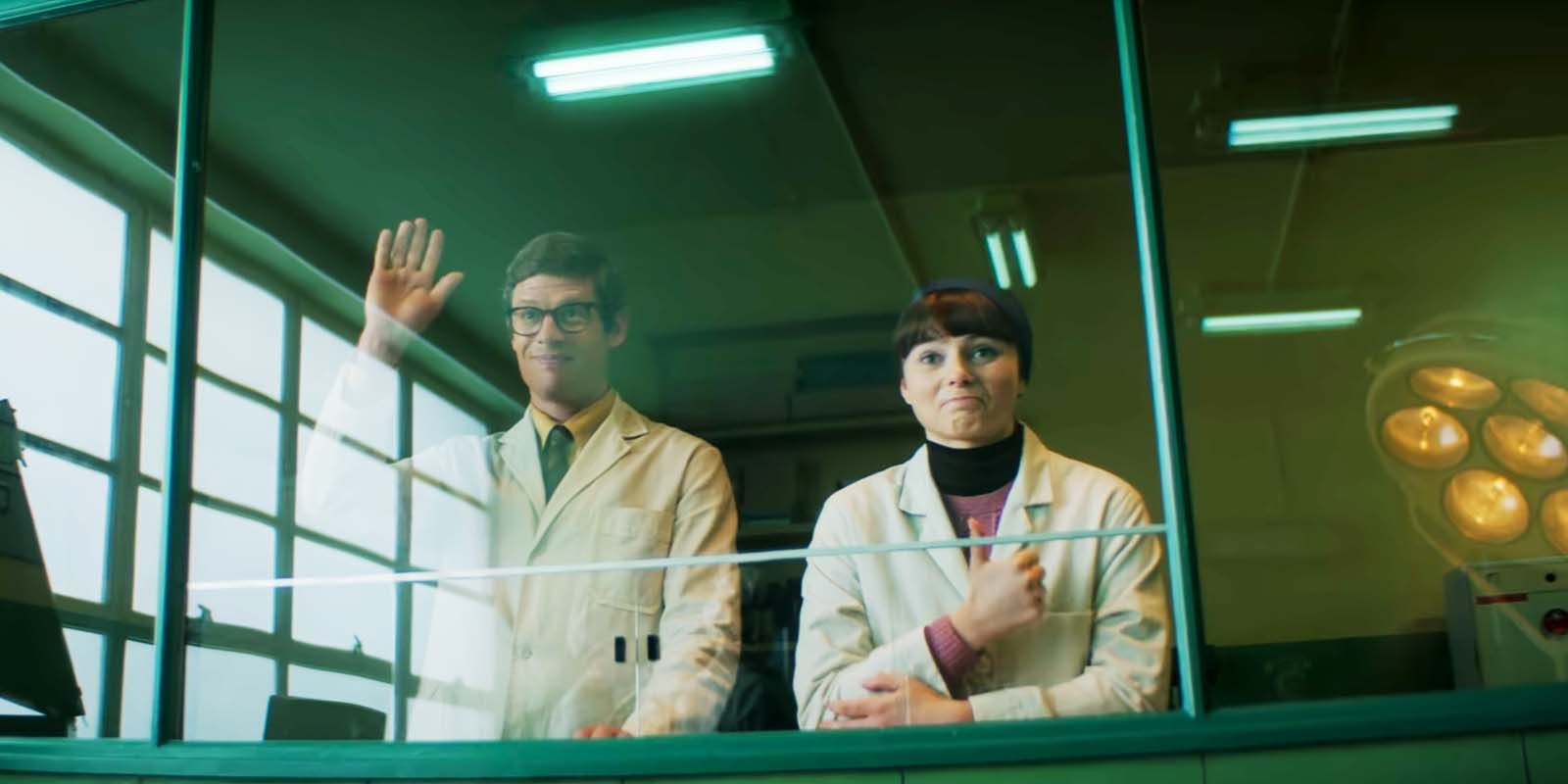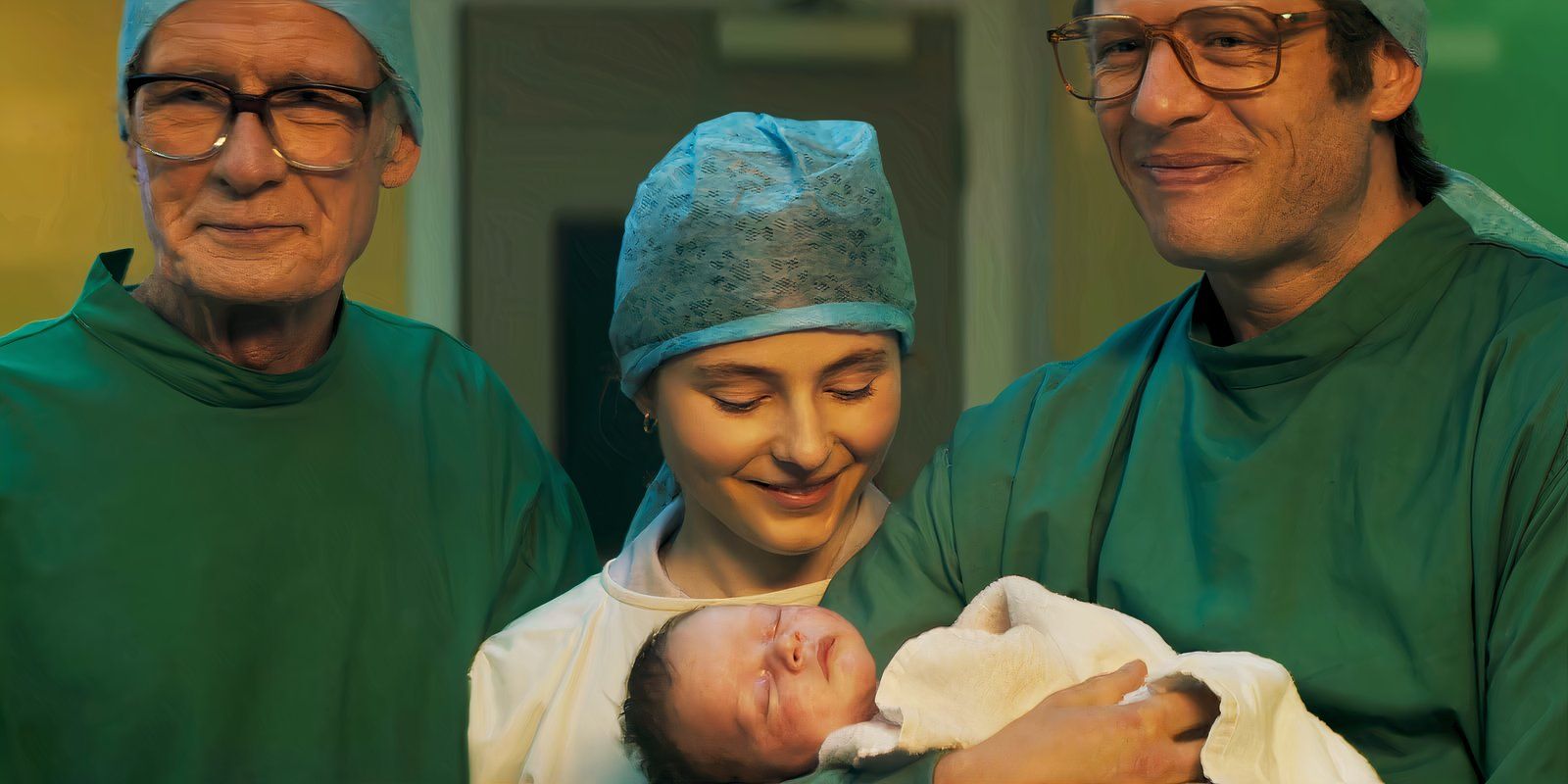
Joy True Story: How The Development Of The First IVF Baby, Louise Joy Brown, Really Happened In The ’60s & ’70s
Netflix’s Joy retells the events that led to the development of the first IVF baby, painting a challenging picture because of the obstacles encountered during the scientific process but also the objection of society at large. Releasing on Netflix on November 22, 2024, after a limited run in select cinemas, the biographical drama stars Bill Nighy as gynecologist Patrick Steptoe, James Norton as physiologist Robert “Bob” Edwards, and Thomasin McKenzie as Jean Purdy, the world’s first embryologist. Joy is remarkably accurate in detailing the real story that culminated with the birth of the first IVF baby in 1978, Louisa Brown.
Having all three as protagonists of the story, Joy aims to give credit back to Jean Purdy as an integral part of the team that developed the first IVF baby, as for some time, IVF was remembered solely as Robert Edwards and Patrick Steptoe’s accomplishment. Praised by critics, Joy debuts with a high Rotten Tomatoes score, and it’s easy to understand why considering how it aims to faithfully and intriguingly adapt the true story. However, much more about the true story can be learned from Edwards and Steptoe’s A Matter of Life. The Story of IVF – a Medical Breakthrough.
Related
Joy Trailer: Oscar-Nominated Actor Leads Netflix’s Trailblazing Story About Fertility Research
Netflix released the first trailer for its upcoming film Joy, based on the research of IVF treatment, and stars Thomasin McKenzie and Bill Nighy.
Bob Edwards Made His First Major Discovery In IVF Potential In 1965
It Happened Before The Involvement Of Jean Purdy & Patrick Steptoe
Before directly working with human eggs, Bob Edwards worked with mice, rats and hamster eggs in the early 1960s. Adding hormones to mouse eggs showed the ripening happening simultaneously in mice and in vitro, following the same schedule. However, Edwards quickly realized how he needed to start working with human eggs, prompting his analyses of human ovarian tissue. The discovery that it took 36 hours for the human egg to ripen happened during his six-week research trip at Johns Hopkins in Baltimore in 1965, when Edwards couldn’t succeed in fertilizing human eggs but was one step closer to that.
Retelling the steps of the development of IVF, the book A Matter of Life recounts the discoveries and events from Edwards and Steptoe’s perspectives.
While the discovery of the behavior of human ovarian tissue was promising enough, talking about his ideas on implanting the egg with Patrick Steptoe over the phone in 1968 eventually kickstarted the IVF development project. Meeting him by chance six months later at the Royal Society of Medicine began his and Jean Purdy’s collaboration with Steptoe at Oldham, 165 miles away from his lab in Cambridge. The 2024 Netflix movie showed their first meeting as happening exactly as Edwards recounted it did in A Matter of Life.
Bob Edwards & Barry Bavister Successfully Fertilized Human Eggs Outside The Womb In 1969
It Was The First Step Toward IVF In Humans
Just like Joy showed, once Steptoe became involved, the bulk of the work happened in Oldham. However, the next major step was actually taken in Cambridge by one of Edwards’ PhD students, Barry Bavister. Indeed, in trying to achieve fertilization in vitro of hamster eggs, Bavister refined a culture fluid that was particularly successful with hamster eggs, containing an energy source, salts, a protein extracted from cow serum and penicillin. Edwards had the idea to try to use the same culture fluid for in vitro fertilization of human eggs.

Related
55 Best Dolby Atmos Movies On Netflix, Ranked
Dolby Atmos helped turn these already great movies into cinematic experiences that you can’t miss, and these are the best Netflix movies for it.
The first successful fertilization of a human egg outside of a womb happened in 1968 in Cambridge, after Edwards obtained some ovarian tissue from the Edgware General Hospital, with which he had worked before moving to Cambridge. Edwards and Bavister let the eggs ripen in Bavister’s culture fluid, before adding spermatozoa to nine out of 12 eggs. After about 11 hours, spermatozoa were seen entering two of the eggs, making the experiment the first successful in vitro fertilization, albeit happening from human eggs ripened in vitro too.
Various Culture Fluids Were Considered & Tools To Collect Eggs Invented
The fact that the fertilization was successful but from eggs ripened in vitro meant embryonic development problems would be expected. Edwards explains in A Matter of Life how fertilized animal eggs ripened in vitro had the resulting embryo present various problems and even die, with this happening both with rabbits and cows. This posed a brand-new problem, as it meant they needed to find a way to collect human eggs ripened in the ovary without destroying them so that they could be fertilized in vitro before being implanted again.
[The new culture fluid made it possible for Edwards and Purdy to observe] four embryos finally turn into human blastocysts, reaching a development that made them suitable to be replanted, if only they had a lab where they could take that next step.
Edwards and Purdy thus devised a vacuum-like mechanism that could be used during laparoscopy to gently extract the eggs from the ovarian follicles. However, once the embryos didn’t go past eight cells when developing, they also modified Bavister’s culture fluid, until they changed it altogether by moving to Ham’s F10. This eventually got them to follow the process of embryo development well past the time it should have been implanted back in, until one fateful day when four embryos finally turned into human blastocysts, effectively reaching the “first stages of human life” in their culture fluids.
Edwards & Purdy’s Early IVF Patients Didn’t Have A Successful Pregnancy Until 1977
Some Pregnancies Were Ectopic & Others Didn’t Start At All
Taking human eggs from patients to replant them necessarily involved their expectations, thus causing a high degree of disappointment, as highlighted by Edwards in A Matter of Life and shown in Joy. Edwards, Purdy and Steptoe first replanted one fertilized embryo in December 1971, only to learn the patient wasn’t pregnant by January 1972. Edwards describes in A Matter of Life how the issue was eventually identified in the fertility drugs shortening the menstrual cycle by almost a week, making the moment they replanted the fertilized embryo coincide with the days preceding menstruation, which ensured the embryo wouldn’t be retained.
Edwards and Purdy tried to support the development of the embryo after it was replanted by giving the patients hormones, and in the summer of 1975, one woman had a positive pregnancy test at last. This effectively made it the first human pregnancy to begin outside a person, even if the pregnancy was eventually revealed to be ectopic, thus unviable and dangerous for the patient. In another patient, the hormones faltered and declined, making her lose the pregnancy before Steptoe could even examine her by ultrasound.

Related
26 Best Netflix Movies Based On True Stories
There are thousands of movies to choose from on Netflix, but if you are in the mood for a true story, these are the best of them all.
Between the hormones not consistently helping the pregnancy after the fertilized embryo was replanted and Edwards discovering how the liquid paraffin they used in the process had become toxic, Purdy, Edwards and Steptoe faced obstacle after obstacle. In the end, deciding to follow the menstrual cycle and measuring the surge of the LH hormone to understand when the egg had ripened delivered them success. Lesley Brown was among the first patients whose LH levels set when the collection would have happened, and after the fertilized egg was replanted, she eventually became pregnant in 1977.
Louise Joy Brown, The First IVF Baby, Was Born On July 25, 1978
The Second IVF Baby Was Born Six Months After Louise Brown’s Birth
Louise Joy Brown was born on July 25, 1978, via c-section, after a heavily monitored pregnancy during which Purdy, Edwards and Steptoe did all the tests necessary to verify everything was developing as it should have, as Joy showed. Except for Lesley Brown’s high blood pressure, everything went relatively smoothly as described by Edwards and Steptoe in A Matter of Life. The Story of IVF – a Medical Breakthrough. The second IVF baby, Alastair MacDonald, was born six months after Louise Brown, proving IVF could be successfully replicated.
Joy
releases on Netflix on November 22, 2024.
Sources: A Matter of Life. The Story of IVF – a Medical Breakthrough by Patrick Steptoe & Bob Edwards, Bourn Hall





